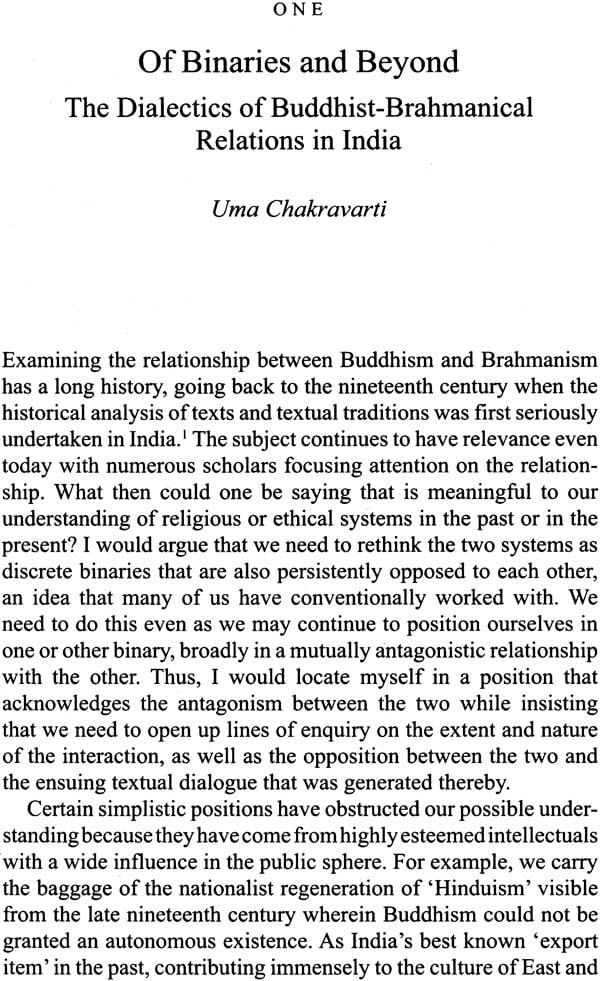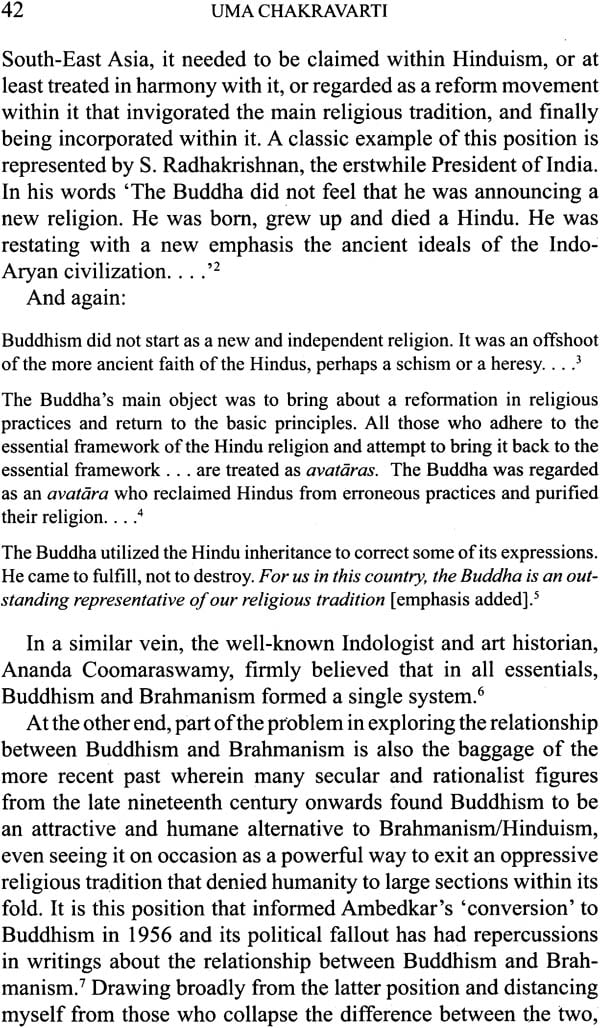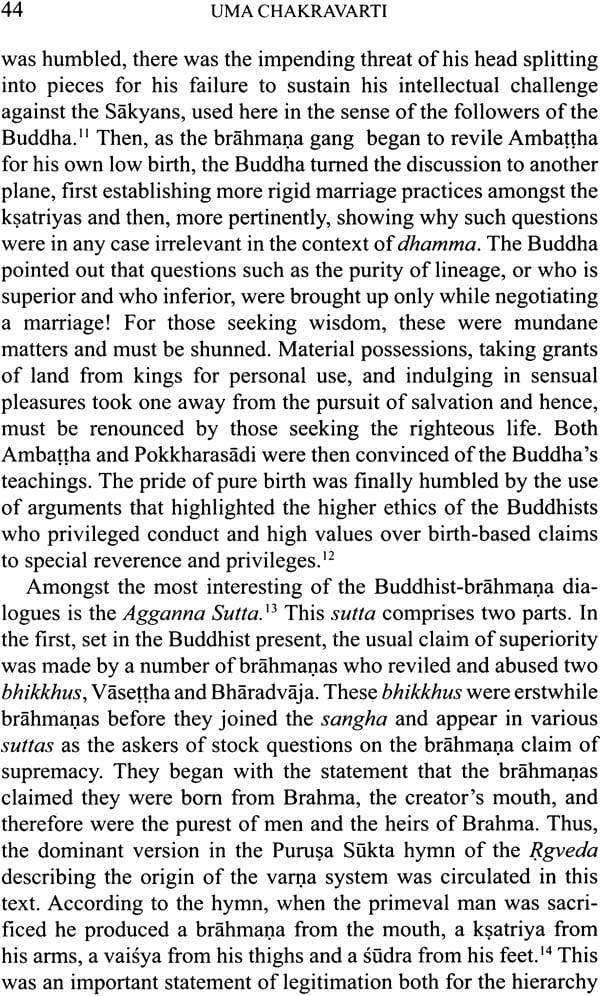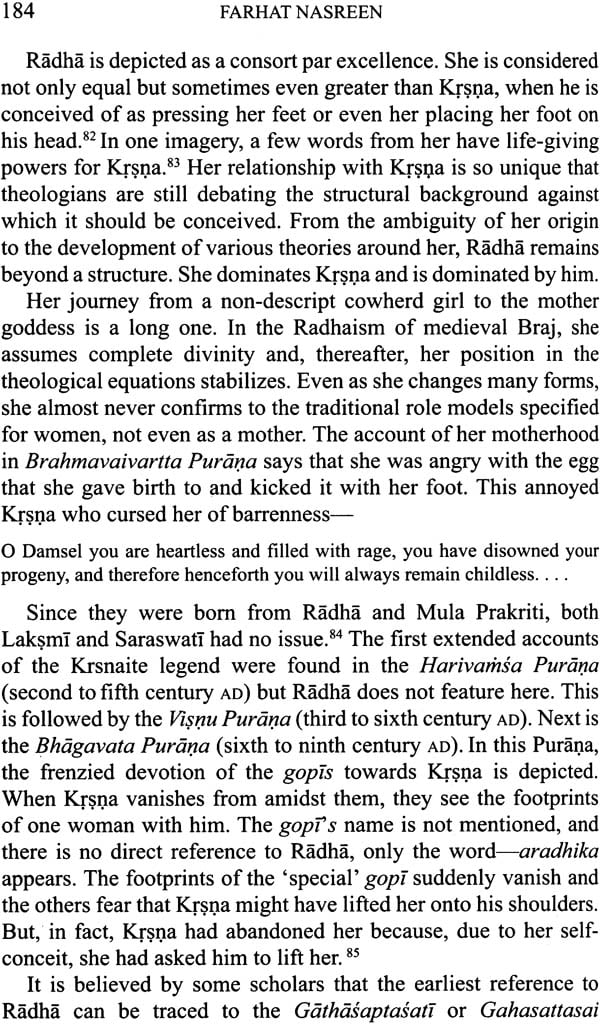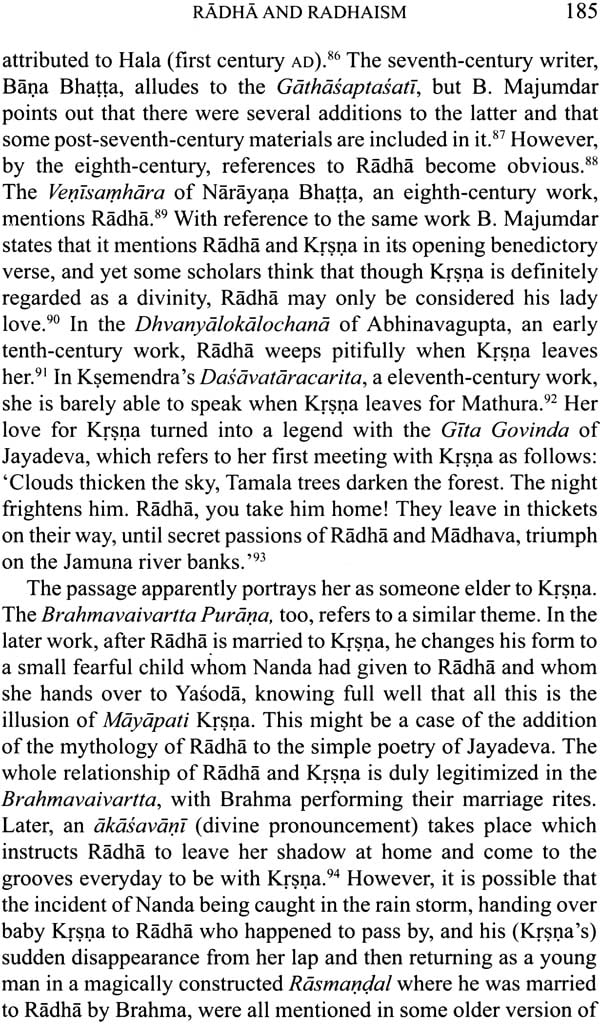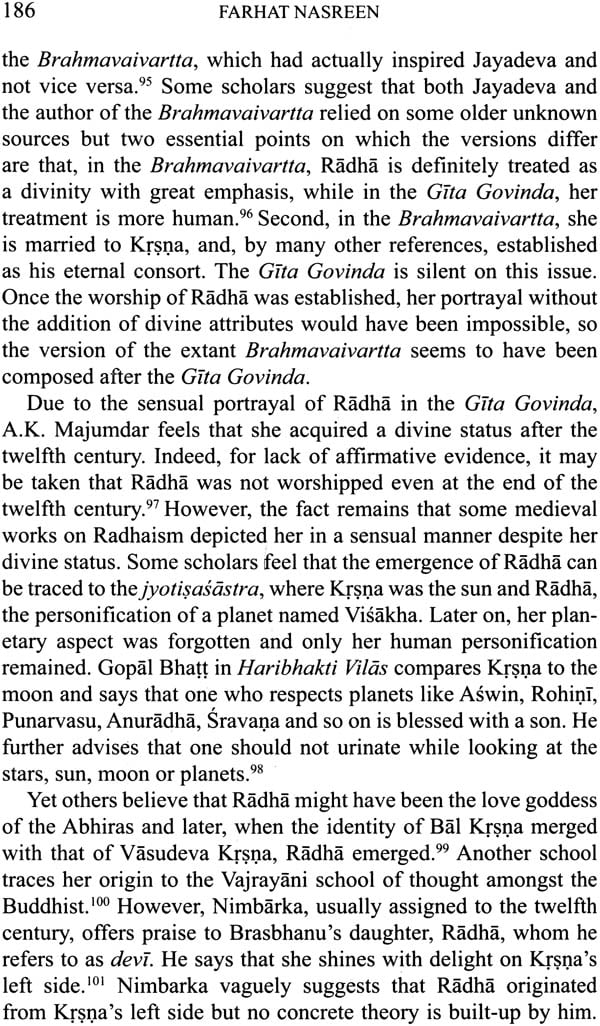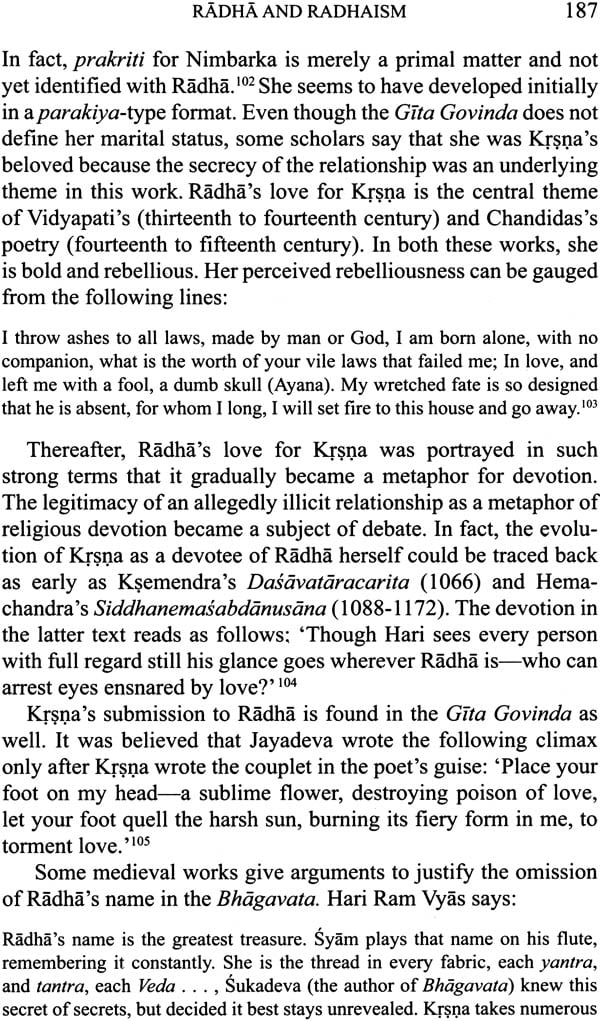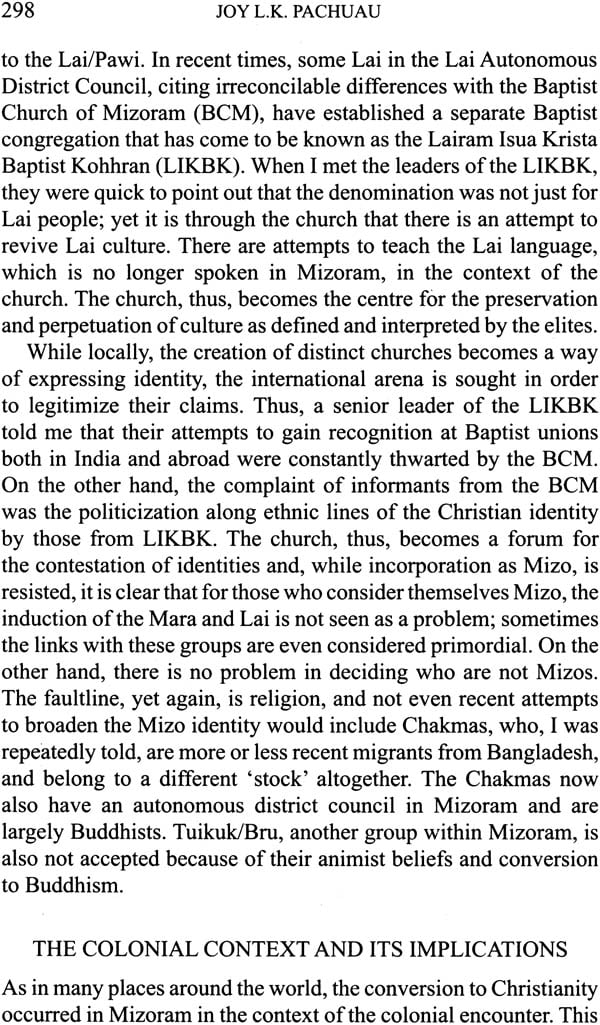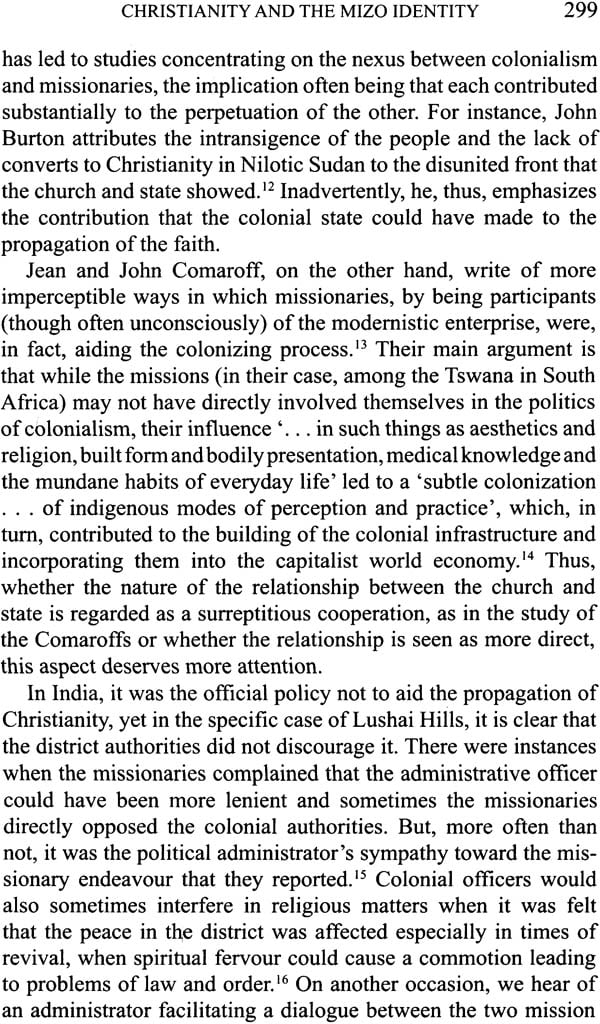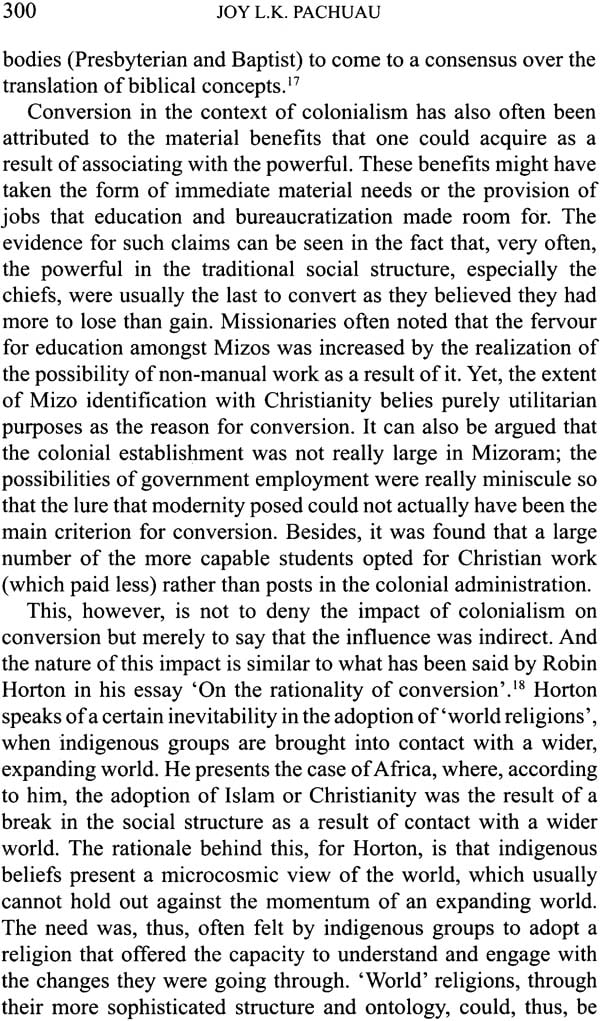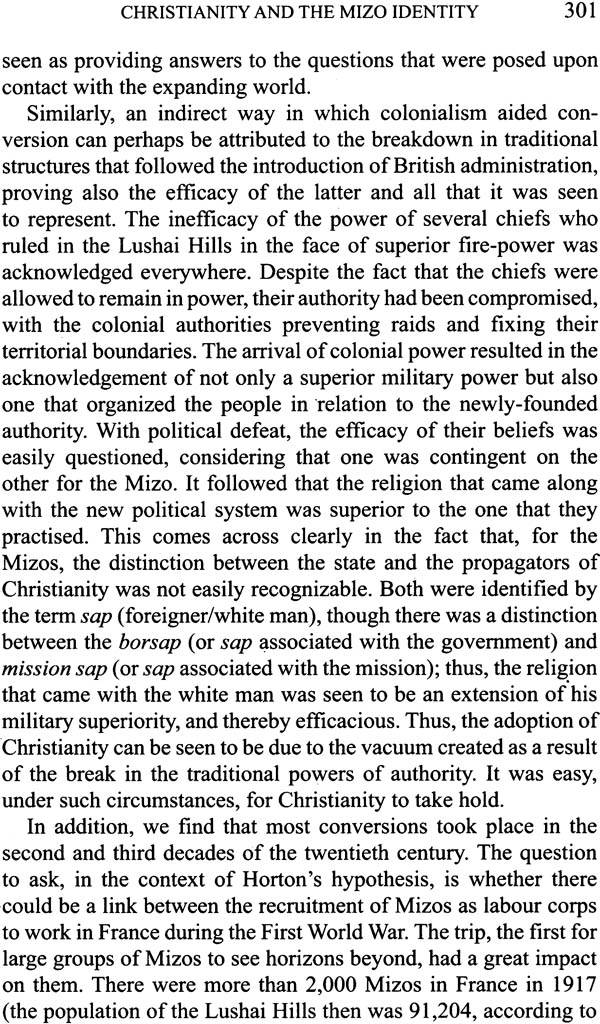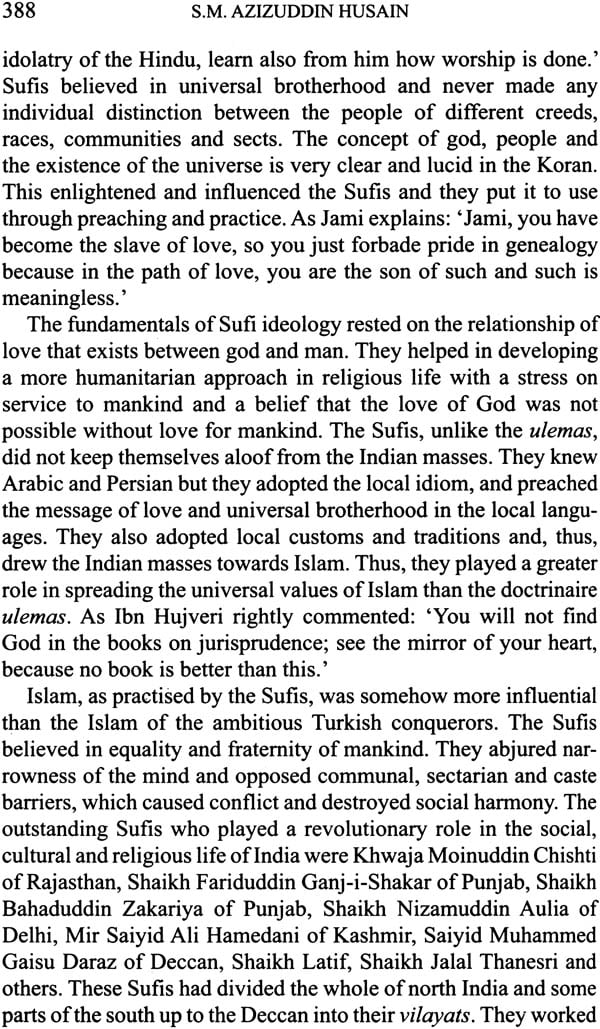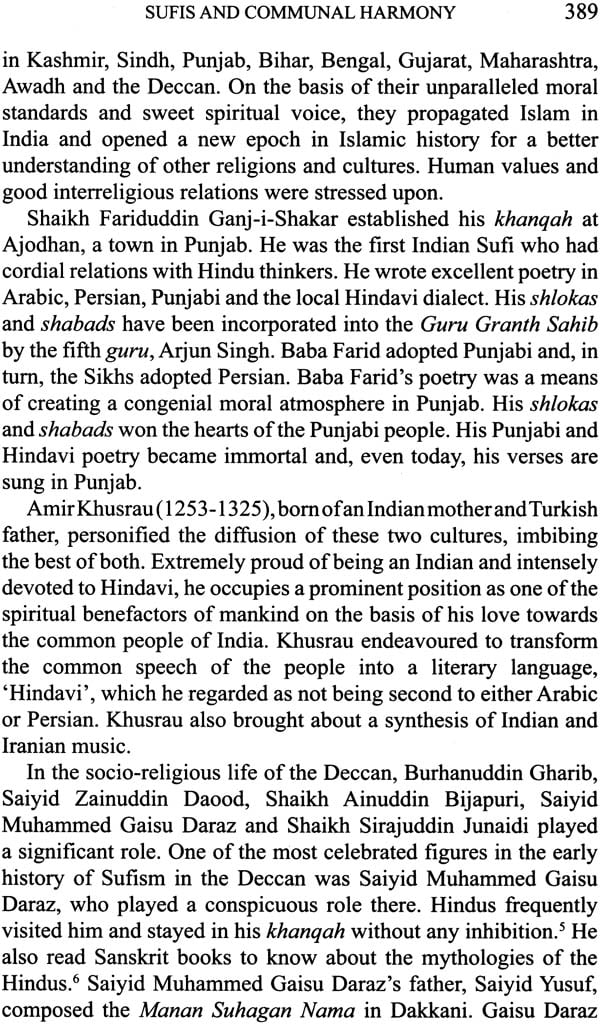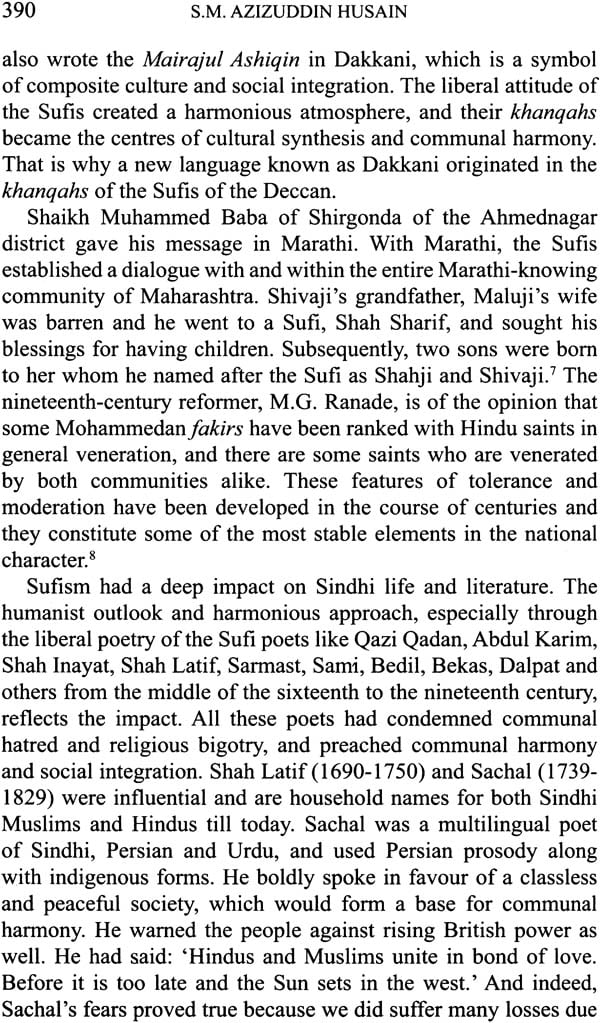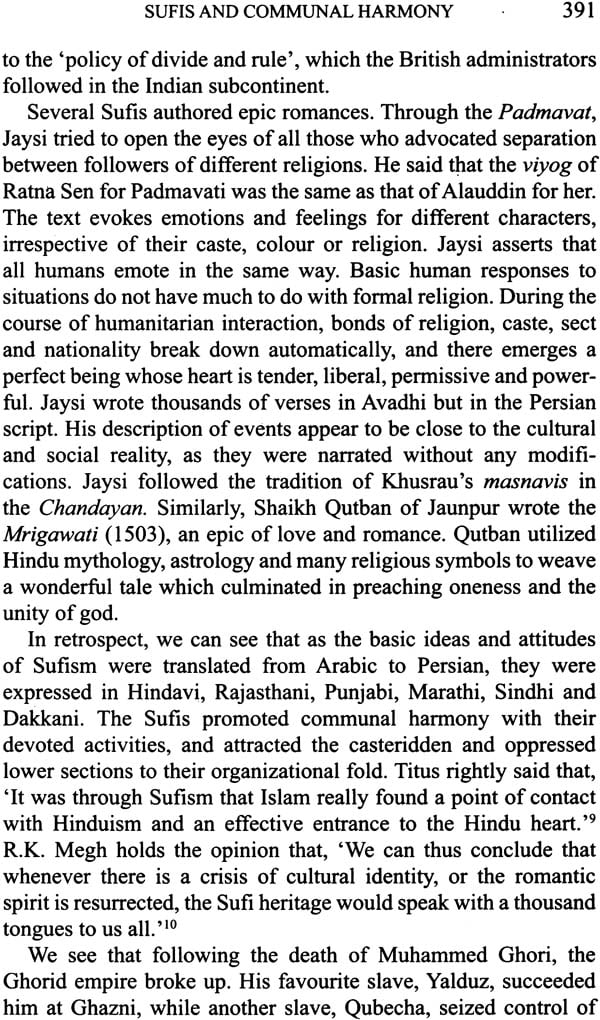
Negotiating Religion (Perspectives from Indian History)
Book Specification
| Item Code: | NAM742 |
| Author: | Rameshwar Prasad Bahuguna, Ranjeeta Dutta and Farhat. Nasreen |
| Publisher: | Manohar Publishers and Distributors |
| Edition: | 2012 |
| ISBN: | 9788173049248 |
| Pages: | 398 |
| Cover: | Hardcover |
| Other Details | 9.0 inch x 6.0 inch |
| Weight | 690 gm |
Book Description
The essays collected in this book present recent scholarly thinking about religious texts, beliefs and practices in various epochs of Indian history. A comprehensive historiographical introduction is followed by contributions from thirteen scholars who in their different ways examine the complex relationship between the religious phenomena and their historical contexts. The collection seeks to explore the history of India's religious traditions and cultures through three themes: Texts, Traditions and Discourse; Divinity and the Feminine and Religious Identities.
By relating the religious processes in Indian history to such issues as caste and gender, identity and community formation, and domination and resistance, the essays interrogate many commonly held assumptions of colonial, nationalist and communal histories in regard to the issues of religious conflicts, interactions and syncretism.
Written from an interdisciplinary perspective, the articles in the volume will be of great interest to students and scholars of the history of Indian religious movements and cultures.
Rameshwar Prasad Bahuguna teaches Medieval Indian History at the Department of History and Culture, Jamia Millia Islamia, New Delhi. He has published numerous articles on the history of Sant and Vaishnava movements in Medieval India.
Ranjeeta Dutta teaches Medieval Indian History at the Department of History and Culture, Jamia Millia Islamia, New Delhi. She was a fellow at the Indian Institute of Advanced Study, Shimla from 2009-11 and her publications include essays on understanding religious identities in pre- colonial south India with emphasis on the Srivaishnava community.
Farhat Nasreen teaches Medieval Indian History at the Department of History and Culture, Jamia Millia Islamia, New Delhi. She has researched on the Braj region in the medieval period and published a translation of the Kashaful Baghaavat Gorakhpur of Ahmad AIi Shah (1857-1860) from Urdu- Persian to English.
The diversity of religious practices in India within a changing historical context and their intersection with complex social processes and institutions, especially in the context of the politics of religious identities, has generated considerable scholarship in recent years. A variety of perspectives from anthropologists, sociologists and political scientists has resulted in important insights about understanding religion in Indian history, generating an interdisciplinary approach. 1 The essays in this volume comprise revised versions of selected papers presented in a two-day conference titled, 'Religion in Indian History: Ideas, Practice and Change', organized by the Department of History and Culture, Jamia Millia Islamia and funded by the UGC- DRS SAP programme. In view of the complexities and vast subjectivity in understanding religion, religious experience and religious phenomena, the essays here have focused on the mutual interactions and negotiations of the religious with extra-religious themes like caste, gender, state, commerce and politics. Further, the subsequent ramifications of such an interface have been analysed in texts, traditions and religious dialogues, as reflected in conversion, representations and contestations-all contextualized in the religious dynamics of various phases in Indian history, ranging from the early period to the colonial period.
Earlier researches on the history of Indian religions comprised the philological and ethnological study of texts, especially the Vedas, a sociological and anthropological analysis of religion, and studies written from the Marxist perspective in which religion was seen as part of the material milieu and social formation.' However, the essays presented here, while keeping in view the importance of these studies, stress the issue of religion and the sacred and their negotiations with the profane and secular, or the non- religious sphere. The essays also attempt to point out that 'any religion or religious system has to be seen as it was understood by its followers (and different groups of them), as well as by outsiders, at each different point of time'. The exploration of the relations between different religious communities in pre-colonial and colonial times has been central to most recent researches in religion in Indian history. The heightening of religious tensions since the mid-1980s and the consolidation of homogenized versions of religious communities coupled with epoch-making events such as the destruction of the Babri Masjid in 1992 (and the communal riots that followed it), the tragedy of 9/11 in the USA and the Gujarat carnage of 2002 have led scholars, albeit in divergent ways, to revisit the themes of religious conflict and accommodation in Indian history.' The essays in the present collection emanate from contemporary scholarly engagement with issues of religious identity and conflict. Yet they try to eschew, as far as possible, the prevailing communal, secular and nationalist ways of interpreting the religious history of India that have been reductionist in their respective approaches.
Recent studies of Indian religious history, including those using Marx's insightful ideas about religious phenomena, have moved away from the conventional way of treating religion as part of a superstructure that is determined by an economic base. In his inaugural address at the conference which gave rise to the present collection of essays, Irfan Habib made the following observations about the role of religion as an active historical agent in shaping the social order and the course of social change:
Elsewhere, in his essay on Kabir, Habib again emphasizes the relative autonomy of the religious sphere and its impact on the social structure:
Is it from the standpoint of a secular age that we find the inseparability of religions and social change unacceptable? Isn't it important to analyse the various ways in which religious traditions, communities and so on are invented? In what ways and how far can the mutual involvement of the 'religious' and 'extra- religious' in pre-modern India and the range of phenomena called 'religion' be understood? Are our modern Indian preoccupations with religious strife and aspirations to communal harmony leading us to misread our past? These are some of the questions that arise inevitably in the course of interrogation of what happens to the domain of religion in the modern period. Such questions have a bearing on discussions on religion in this volume. The essays here are a part of ongoing political and academic debates on three of the following issues: the relevance of secularism as a political doctrine and the relation between the sacred and the secular; trends in history writing where the modern-day cultural and political concerns of community consciousness have encouraged a particular reading of the past, the construction of stereotypes that essentialize religious communities, particularly religious minorities; and finally, the complex issue of religious identities itself.
As an ideological concept and political doctrine, secularism evolved in the context of the intellectual developments that accompanied the Protestant Reformation and Enlightenment in Europe." Advocating the strict separation of the church from the state, secularism emerged as the essence of modernity and the nation state that attempted 'to define a political ethic independent of religious conviction altogether'." Thus, religion was considered to be irrational and backward and consigned to an exclusive, personalized, private sphere, divorced from the public domain that was to be dominated by a rational and scientific outlook. This political doctrine became the core of governance that attempted to prevent and manage religious conflicts and fanaticism.
In India, secularism was adopted in the Constitution as a part of the ideals of a democratic state that would not interfere with its pluralistic religious life nor favour any religion at the expense of another, thus ensuring 'equal respect for all'. to However, despite state measures to create institutions and implement programmes that articulated the Indian brand of secularism, communal conflicts and the persecution of religious minorities as the 'others' continued unabated, often with the open or tacit acquiescence of the Indian nation state. The crisis of Indian secularism was further underscored by the Hindutva attack on secularism that focused on accusing the 'pseudo-secularists' of pandering to the non-Hindu minorities. It is not only in India that secularism is in crisis. Even in the liberal democratic nations of the West, the birthplace of secularism, this crisis is reflected in the difficulties faced by their state systems in grappling with the issues of multiculturalism.
The assault by the Hindutva ideology on secularism and the failure of the Indian state to safeguard minority rights have generated academic debates among sociologists, anthropologists, political scientists and political philosophers on secularism and the relevance of religion in countering fundamentalism and violence. According to some of these scholars, the solution lies in using the indigenous resources of 'religious toleration' and interreligious communications to resolve communal conflicts and prevent their occurrence in future. This would entail, according to them, a dialogue that would acknowledge religion in the public domain, thus doing away with the Western idea of separation between the state and religion, where the former is 'secular' and the latter' private'.
However, it is emphasized here that despite all its problems and inherent contradictions, 'the desirability and inescapability of secularism' cannot be denied and attempts have to be made to work out 'an alternative conception of secularism rather than simply an alternative to it' .13 Thus, in a pluralistic society like India, separation between the state and religion is imperative in order to prevent the hegemonization by the majoritarian communalism and discrimination against minorities. However, such a separation does not imply the negation of religion in the public arena. In fact, religion never disappeared from the public domain and has always been an integral part of social identities. Any attempted separation is artificial and flawed. It is suggested here that perhaps one of the ways to counter fundamentalism is to understand the historical processes of the evolution of religions, religious communities and identities.
| Acknowledgements | 7 | |
| Note on Transliteration | 9 | |
| introduction | 11 | |
| Part I: Texts, Traditions and Discourse | ||
| 1 | Of Binaries and Beyond: The Dialectics of Buddhist-Brahmanical Relations in India | 41 |
| 2 | Tradition and Memory: Filiation and Identity in Early Sanskrit Literature and Philosophy | 61 |
| 3 | Representations of a Past: The Life of Ramanuja and the Srivaisnava Community | 85 |
| 4 | Culture Under Interpretative Stress: Bankim Chandra and the Re-Formulation of 'Dharma' in Colonial Bengal | 119 |
| Part II: Divinity and The Feminine: Representations of Gender and Gender Relations | ||
| 5 | A Home for the Goddess: Structural Shrines for Independent Female Deities in Early Medieval Tamilakam, c. CE 600-1300 | 141 |
| 6 | Radha and Radhaism: Neutralizing Gender in Brajmaya Krsnaism of Medieval Braj | 169 |
| Part III: Religious Identities: Negotiating Conflict and Accommodation | ||
| 7 | Understanding Sufi-Sant Interaction in Medieval India | 211 |
| 8 | Saiyid Ahmad Barelvi, Altaf Husain Hali and the Formation of Muslim Identity in the Nineteenth Century | 233 |
| 9 | Exclusive Resources and Inclusive Objectives: Islam in the Making of Indian Nationalism: 1857-1922 | 261 |
| 10 | Christianity and the Mizo Identity: A Review of Sociological and Historical Circumstances | 291 |
| 11 | Religion and Social 'Subversion': Re-examining Colonial Orissa | 325 |
| 12 | Religious Rhetoric, Mercantile Strategies and a Community in Revolt: A Study on the Conflicts between the St. Thomas Christians and the Portuguese Padroado | 353 |
| 13 | Sufis and Communal Harmony: A Case Study of Indian Sufis | 383 |
| List of Contributors | 395 |
